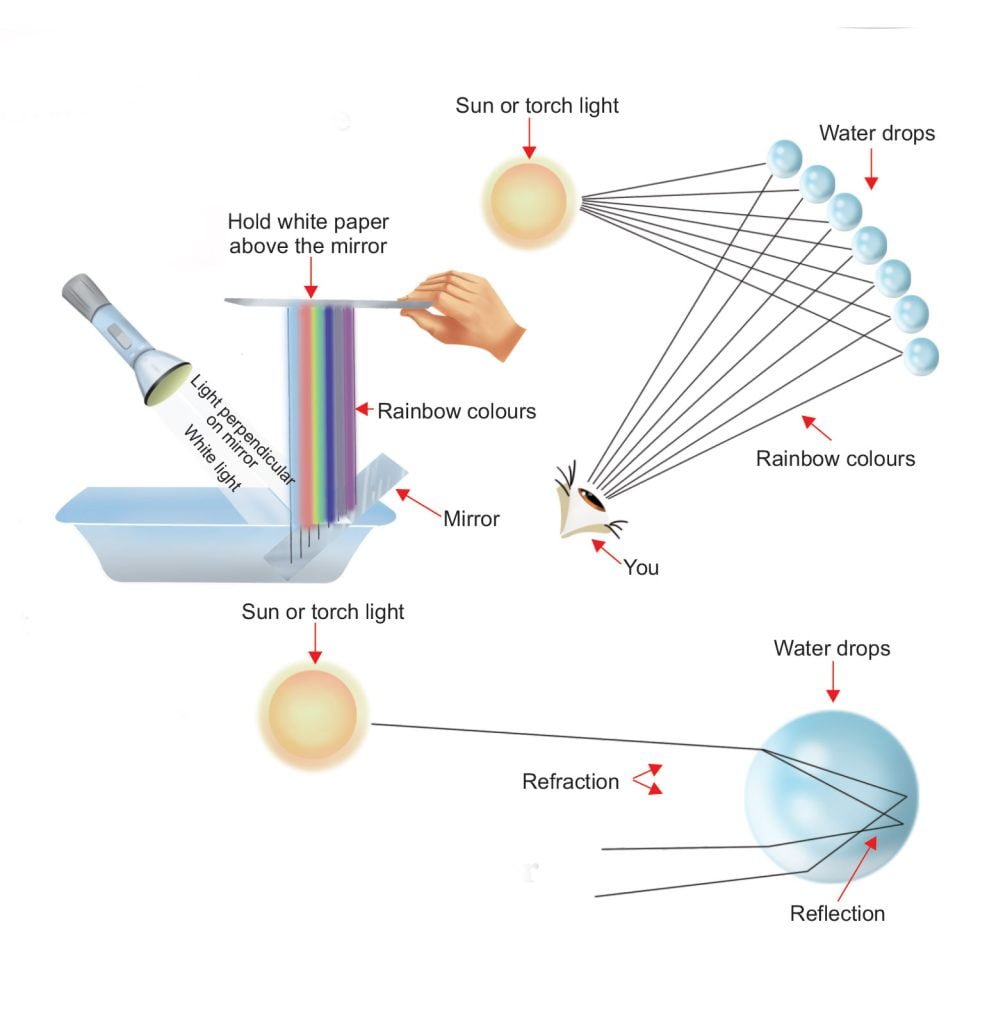
You will need:
- A shallow dish
- Water
- Mirror
- Torch or sunlight
- White paper
Looking at the seven coloured hues in the sky
makes us all happy. But how and why do
rainbows actually occur? Understand the science
behind them by conducting this experiment
rather than reading it theoretically.
INSTRUCTIONS
- Take the shallow dish and
fill it with water. - Submerge half the mirror
into the water but at an
angle. Do not let it lie flat
at the bottom. - In case the angle of sunlight is not
in your favour, use a torch. - Shine the torch perpendicular to the mirror.
- Ask a friend to help you hold a piece of white paper
above the mirror and find the angle at which
torch light reflects back on the paper.
RESULT
The light which reflects from the mirror onto the paper breaks up into the colours of the rainbow. The white light from the torch is not just one colour, but rather made up of different colours. When the light is shone through the water, it refracts or bends, and with it all the colours, it is made up of, do so. But each colour travels at a different speed through any medium, like glass or water. Thus, when you try and reflect the light through the water onto the mirror, it reflects back onto the white paper, but is refracted by the water into separate colours, creating a rainbow.

